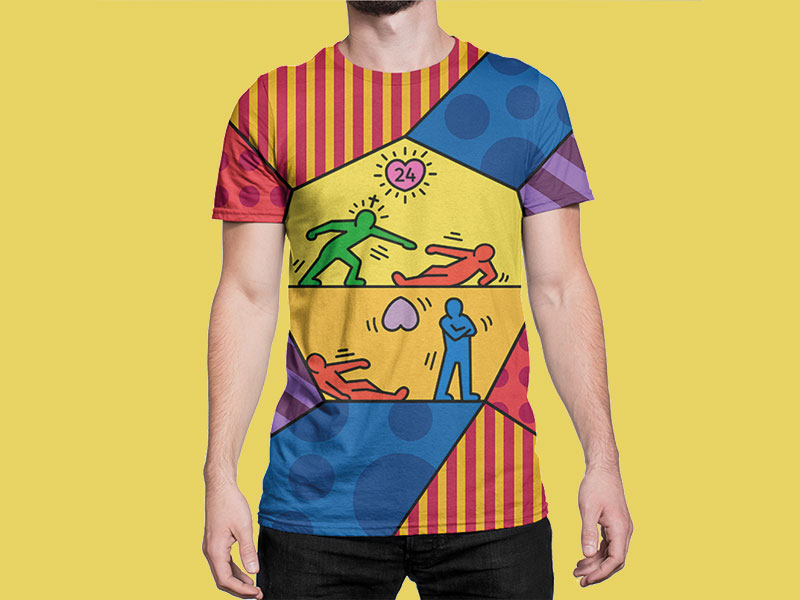Corporate Brand Strategy Consulting & Positioning Services
Stop competing on price. Create uncontested market space. Build a brand strategy that attracts customers like a magnet by aligning with their worldview and creating emotional connections.
Stuck in the Red Ocean?
Consumers no longer believe in advertisements. Your market is crowded. You're competing on price. Your brand is invisible in a sea of competitors doing the same thing. It's time to break free.
Welcome to the Blue Ocean
Our brand strategy service helps you create uncontested market space where competition is irrelevant. We'll help you build a brand that customers love, trust, and can't wait to share with others.
- Stand out from competitors with radical differentiation
- Attract ideal customers who resonate with your message
- Build emotional connections that drive loyalty
Our 5-Phase Process
A proven methodology that transforms your business into a magnetic brand
Brand Substance
We strip your brand to its core essence and build up the substance. Define your brand purpose, vision, and mission that will guide all future decisions and inspire your team and customers.
Positioning Strategy
Through comprehensive competitive research, we identify your "Onlyness" – the radical differentiation that makes competition irrelevant. This is your ticket to the Blue Ocean.
Customer Persona Design
Deep research to identify your ideal customer persona and archetypes. Understand their desires, fears, and worldviews so your brand message resonates at a visceral level.
Messaging Framework
Create a brand message playbook with clear tone and voice guidelines. We'll identify your brand archetype to ensure your messaging resonates authentically. Plus, 6 months of messaging crafted to engage, convert, and build loyalty with your audience.
Visual Language Strategy
Define the visual direction for your brand identity, including color psychology, typography, imagery style, and design principles that will make your brand instantly recognizable.
Strategic Brand Success Stories
See how strategic positioning transformed these businesses

Vintage Restaurant Branding & Card Design

Cognition Vineyard Logo Branding

The Art Of Creating Sub-Brands

Wine Label Branding

Maldives Resort Brand Development

Positivewear Apparel Branding
Choose Your Package
Transparent pricing with everything you need to get started. No hidden fees, no surprises.
Foundation
What's Included:
- Brand Substance workshop (purpose, vision, mission)
- Basic positioning strategy
- Customer persona development
- Brand messaging framework
- Written strategy summary
- 1 revision round
100% ownership • No hidden fees • Satisfaction guaranteed
Strategic
What's Included:
- Everything in Foundation, plus:
- One-on-one work with senior strategist
- Complete brand strategy playbook
- Competitive research & analysis
- Blue Ocean positioning strategy
- Brand archetype identification
- Messaging framework with tone & voice
- 3 months of crafted messages
- 2 revision rounds
100% ownership • No hidden fees • Satisfaction guaranteed
Immersion
What's Included:
- Everything in Strategic, plus:
- Extended strategy workshops (4+ hours)
- Comprehensive brand strategy playbook
- Deep competitive analysis
- Customer journey mapping
- Visual language strategy
- 6 months of crafted messages
- Unlimited revision rounds
- 30-minute strategy consultation call
- Ongoing strategic guidance (30 days)
100% ownership • No hidden fees • Satisfaction guaranteed
All packages include 100% ownership of final designs
Questions? Call +1 (845) 233-6410 or contact us
Our Brand-Love Guarantee
We've been creating brands since 1998, and we're confident you'll love what we create for you. But we get it - investing in your brand is a big decision. That's why we offer this simple promise:
If you're not excited about the initial concepts we present, we'll refund 50% of your investment. No runaround. No hassle. Just a quick email.
Here's how it works:
Once we deliver your initial design concepts (typically within 10-14 days of receiving your brief), you'll have 3 business days to review them. If our creative direction doesn't resonate with you, simply let us know and we'll process your 50% refund immediately.
Why 50%? Because by that point, we've invested significant strategy time, research, and creative energy into understanding your brand and developing concepts tailored to your vision. But we never want you to feel stuck with work that doesn't excite you.
Bottom line: We only succeed when you love your brand. And after 2,000+ successful projects, we're betting you will.
What Strategic Clients Say
Hear from businesses that moved from Red Ocean to Blue Ocean
Steve Turner
Turn2Coaching
"Delighted to have used Spellbrand for our last project. The work was thorough and results excellent. For me it was such a pleasure to work with Mash who was able to keep up with all my last minute requests for small changes. Nothing was too much of a problem and I would have to say that its great to work with people who do actually put the customer needs first! One thing saying it, its another thing doing it – Thanks Mash!"
Gracienne Myers
Banana Vital
"If you are looking for a company to design your company’s identity or even rebrand your current brand, Spellbrand is the company that you would choose, they designed my company, Banana Vital’s logo, and provided me with 6 design to choose from which made it hard to choose because they were all very good. Just recently I hired them to rebrand Mechanical Bull Sales and again every logo was great and well thought out. I am very pleased with the work that Spellbrand has provided and I am looking for to continue working with them."
Christian Nocera
Dapper Yankee
"Delighted to have used Spellbrand for our last project. The work was thorough and results excellent. For me it was such a pleasure to work with Mash who was able to keep up with all my last minute requests for small changes. Nothing was too much of a problem and I would have to say that its great to work with people who do actually put the customer needs first! One thing saying it, its another thing doing it – Thanks Mash!"
Ernest Bannister
M.O.R.E
"My experience with the Spell brand team has been nothing short of excellent. From the beginning Mash and team made me feel very comfortable with the design process. I am extremely happy with the results of my design and look forward to working with Spellbrand; exclusively! I have told many family, friends and peers about the great work the Spellbrand team has done in creating my design. Thanks again for all your patience and professionalism; I look forward to working with you in the future."
Ready to Build Your Brand?
Join 2000+ businesses that have transformed their brands with Spellbrand
Let's Create Something Magical Together
Ready to create a brand that stands out and drives real business results? Browse our service packages and choose the perfect fit for your business. Transparent pricing, instant purchase, and immediate project start.
